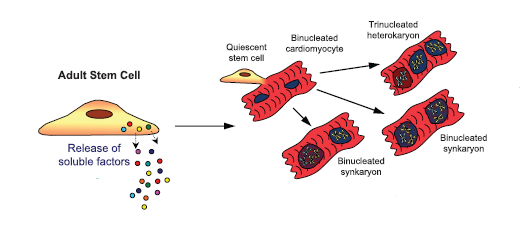

Paracrine Mechanisms in Adult Stem Cell Signaling and Therapy
Massimiliano Gnecchi, Zhiping Zhang, Aiguo Ni and Victor J. Dzau
Animal and preliminary human studies of adult cell therapy following acute myocardial infarction have shown an overall improvement of cardiac function. Myocardial and vascular regeneration have been initially proposed as mechanisms of stem cell action. However, in many cases, the frequency of stem cell engraftment and the number of newly generated cardiomyocytes and vascular cells, either by transdifferentiation or cell fusion, appear too low to explain the significant cardiac improvement described.
Accordingly, we and others have advanced an alternative hypothesis: the transplanted stem cells release soluble factors that, acting in a paracrine fashion, contribute to cardiac repair and regeneration. Indeed, cytokines and growth factors can induce cytoprotection and neovascularization. It has also been postulated that paracrine factors may mediate endogenous regeneration via activation of resident cardiac stem cells. Furthermore, cardiac remodeling, contractility, and metabolism may also be influenced in a paracrine fashion. This article reviews the potential paracrine mechanisms involved in adult stem cell signaling and therapy.